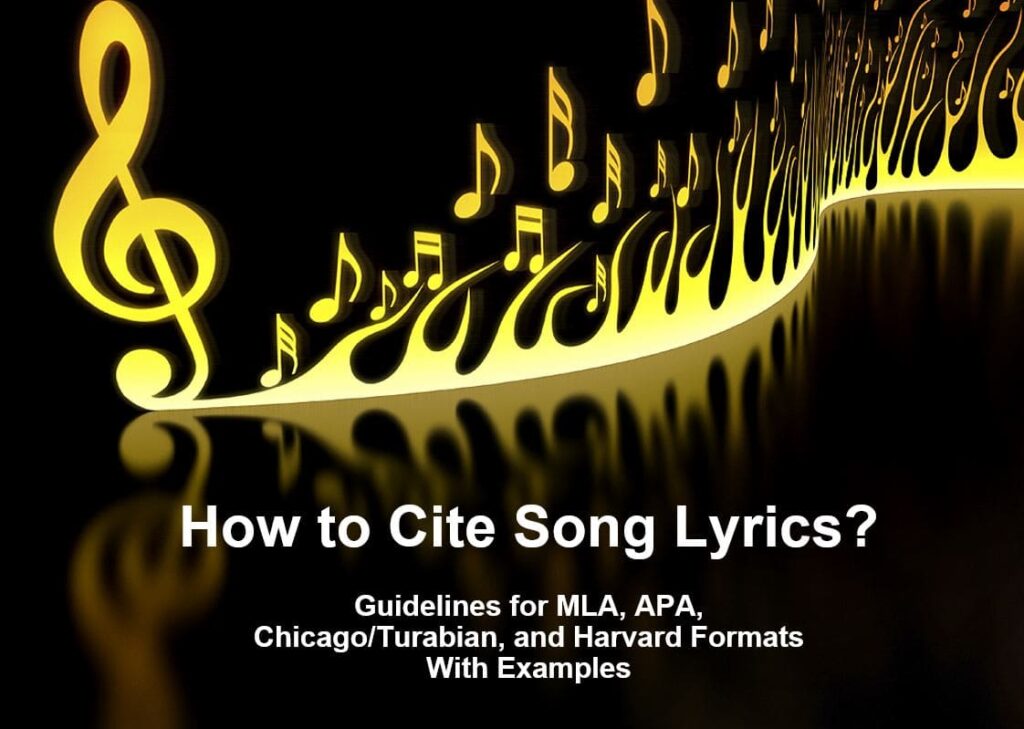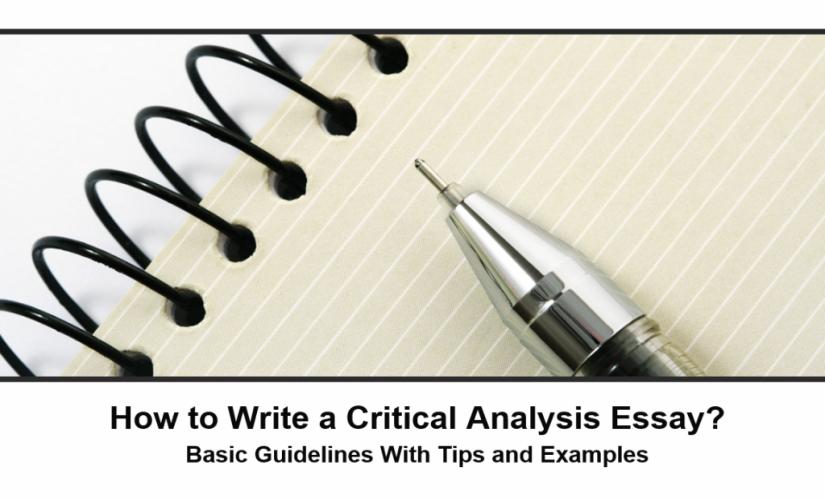Songs contain lyrics that can support arguments made in scholarly papers. Basically, MLA 9, APA 7, Chicago/Turabian, and Harvard referencing styles rely on different rules for in-text citations and bibliographic entries. In this case, significant differences include orders or names, use of capital letters and sentence cases, and sequence of bibliographic details. For example, bibliographic entries in MLA 7 and Chicago/Turabian formats should have a song’s titles in a title case. However, song’s titles must appear in a sentence case for APA 7 and Harvard format styles. In all referencing styles, writers may use parenthetical or narrative in-text citations. Also, parenthetical in-text citations should appear inside rounded brackets. In turn, only the MLA 9 style does not require an author-date format for in-text citations. Besides, the MLA referencing style requires students to use the artist’s name and the section cited, as one might in an American dream argumentative essay. In particular, parts of songs refer to the duration of time that contains quoted lyrics. Also, a prudent writer includes the production date inside the essay’s body. Finally, one should include URL links for songs located in online databases. Hence, students need to learn how to cite song lyrics in MLA 9, APA 7, Chicago/Turabian, and Harvard formats.
General Guidelines for Using Music Lyrics in MLA 9, APA 7, Chicago/Turabian, and Harvard Styles
Songs are suitable sources of information used in scholarly papers. For example, students in literature write papers analyzing specific song lyrics. In most cases, instructions require them to use different referencing styles to cite song lyrics. Basically, MLA 9, APA 7, Chicago/Turabian, and Harvard referencing styles rely on different rules for in-text citations and bibliographic entries. Also, the most significant differences include orders or names, use of capital letters and sentence cases, and sequence of bibliographic details. However, credible papers must follow the necessary guidelines to avoid possible cases of plagiarism. Hence, this guide provides key steps that a writer must follow when citing song lyrics MLA 9, APA 7, Chicago/Turabian, and Harvard styles.

How to Cite Song Lyrics in MLA 9
1. In-Text Citation Rules for Citing Music Lyrics in MLA 9
MLA citation requires writers to use the artist’s name and the section cited. Basically, parts of songs refer to the duration of time that contains the quoted lyrics. In this case, one can use both parenthetical and narrative in-text citations when writing scholarly papers. In practice, parenthetical in-text citations should include the artist’s name and the time containing the cited lyric. Also, these details should appear inside rounded brackets at the end of a sentence. Hence, writers should separate the name and time using a black space.
Citation scheme for song lyrics in MLA 9:
- (Name Time)
In-text citation example for citing music lyrics in MLA 9:
- (Knowles-Carter 2:00-3:01)
Narrative in-text citations contain similar details as parenthetical ones. However, only the time should appear in rounded brackets at the end of the sentence.
Example of a narrative in-text citation for song lyrics in MLA 9:
- According to Knowles-Carter, … (2:00-3:01).
2. Full Bibliographic Entry on Works Cited for Song Lyrics in MLA 9
Music exists in multiple ways, which depends on the container that a writer may access. For example, music citations in MLA 9 begin with last names of artists. In some instances, writers may opt to use composers or performers in the absence of the artist’s surnames. Otherwise, one must note composers and performers after the album’s title. In turn, the song’s title must appear inside double quotation marks, while the album’s entry should look as italicized. Besides, one must use the title case for the song’s entry. Then, other essential details include the recording manufacturer and the publication date where applicable.
Example of a bibliographic entry on Works Cited for song lyrics in MLA 9:
- Knowles-Carter, Beyoncé Giselle. “Irreplaceable.” Lemonade, Parkwood Entertainment, 2009, www.youtube.com/watch?v=2EwViQxSJJQ.
The bibliographic entry should begin with the artist’s surname followed by the first and second names. Periods should support the artist’s names, title, and URL link for music available online. However, a comma should follow the album, producer, and publication year.
3. MLA Footnote for Song Lyrics
MLA referencing style requires writers to use references when providing long explanations. In this case, MLA footnotes contain details that may distract readers. As a rule, one should use numerical footnote callouts inside the body text. Moreover, footnote callouts should appear as a suffix. In turn, actual footnotes must look at the bottom of the page containing the callout. Hence, the following is an example of a possible note:
Footnote example for song lyrics in MLA 9:
- 1 For more relevant lyrics, listen to the section between the second and third minutes.
How to Cite Song Lyrics in APA 7
1. In-Text Citation Rules for Citing Music Lyrics in APA 7
APA style requires writers to use parenthetical or narrative in-text citations. Basically, writers should use the artist’s surname and production date. In some cases, one may include the truck number in the in-text citation where applicable.
Citation schemes for song lyrics in APA 7:
- (Surname, Date)
- According to Surname (date), … .
Parenthetical citation sample for song lyrics in APA 7:
- (Knowles-Carter, 2009)
Narrative in-text citation example for citing music lyrics in APA 7:
- Knowles-Carter (2009) sang about the value of a romantic partner… .
2. Reference Entry for Song Lyrics in APA 7
Bibliographic entries in APA 7 should appear on the last page of any essay or research paper. As a rule, reference entries should contain the artist’s surname, song’s title, medium, and producer and URL link where applicable. Also, bibliographic entries must appear in the sentence case. Hence, the following is an example of the reference entry.
Example of a reference entry for song lyrics in APA 7:
- Knowles-Carter, B. G. (2009). Irreplaceable [CD]. Parkwood Entertainment. https://www.youtube.com/watch?v=2EwViQxSJJQ
3. APA Footnote for Song Lyrics
The following is an example of a possible footnote.
Footnote example for song lyrics in APA 7:
- 1 For more details about the importance of love, listen to the section between the second and third minutes.
How to Cite Song Lyrics in Chicago/Turabian
1. In-Text Citation Rules for Citing Music Lyrics in Chicago/Turabian
The Chicago/Turabian citation style requires writers to use music lyrics to support their central arguments. As a rule, all citations must contain an accurate date. Besides, students should use the recording date as opposed to the release year. In turn, the Chicago/Turabian style requires one to use two in-text citation types, which include parenthetical citations or footnotes.
Parenthetical in-text citation for song lyrics in Chicago/Turabian:
Parenthetical citations in Chicago/Turabian should include the artist’s surname and production date. Basically, writers should separate these details with space, which must appear inside rounded brackets at the end of a sentence. Hence, the following is an example that one should use:
In-text citation scheme:
- (Artist Date)
Actual in-text citation:
- (Knowles-Carter 2009)
2. Bibliography Entry for Song Lyrics in Chicago/Turabian
Chicago/Turabian bibliographic entries should appear on the essay’s last page. Basically, a credible bibliographic entry should contain the artist, the song’s title, recording data, producers, and medium. However, one may include the URL link of the song where necessary. Also, the song’s title must appear as italicized for the bibliographic entry. Hence, the following is the scheme required and actual example.
Bibliography scheme for song lyrics in Chicago/Turabian:
- Name of group or composer or performer. Title. Contributing personnel. Recording date. Recording Company or Publisher, medium.
Example of a bibliography entry for song lyrics in Chicago/Turabian:
- Knowles-Carter, Beyoncé Giselle. Irreplaceable. 2009. Parkwood Entertainment, CD. https://www.youtube.com/watch?v=2EwViQxSJJQ.
3. Chicago/Turabian Footnote for Song Lyrics
Writers should use footnote callouts in the text body. Basically, numerical callouts should follow ending punctuation marks, like periods and question and exclamation marks. In this case, Chicago/Turabian footnote containing the bibliographic entry should appear at the bottom of the page. Also, each note should have a binary number that corresponds to the one used in the callout. However, a period should follow the numeral used. Besides, the artist’s name should appear in the standard form, which begins with the first name for the first in-text citation. Hence, the following is the scheme and actual in-text citation.
Footnote scheme for song lyrics in Chicago/Turabian:
- 1. Name of group/composer/performer, “Title,” contributing personnel, recording date, Recording Company or Publisher, track number on Name of Album, year of release, medium.
Example of a Chicago/Turabian footnote for song lyrics:
- 1. Beyoncé Giselle Knowles-Carter, “Irreplaceable,” recorded February 2009, on Lemonade, Parkwood Entertainment, CD, https://www.youtube.com/watch?v=2EwViQxSJJQ.
How to Cite Song Lyrics in Harvard
1. In-Text Citation Rules for Citing Music Lyrics in Harvard
The Harvard referencing style requires writers to use parenthetical or narrative in-text citations. As a rule, in-text citations must include the artist’s surname and production date. For parenthetical in-text citations, students should separate the artist’s surname and production date with space.
Citation schemes for song lyrics in Harvard:
- (Surname Date)
- Surname (Date) sang … .
Parenthetical citation sample for song lyrics in Harvard:
- (Knowles-Carter 2009)
Narrative in-text citation example for citing music lyrics in Harvard:
- Knowles-Carter (2009) sang about the importance of valuing romantic love.
2. Reference Entry for Song Lyrics in Harvard
Bibliographic entries in Harvard should appear on the last page of essays and research papers. As a rule, Harvard references should contain the artist’s surname, song’s title, medium, and producer. Moreover, the song’s title must appear in sentence case and be italicized. In this case, a prudent writer must use commas to separate all the details in the entry. Besides, reference entries should begin with the author’s surname followed by the initials of other names. Hence, the following is an example of a reference entry for song lyrics in Harvard.
- Knowles-Carter, BG 2009, Irreplaceable, CD, Parkwood Entertainment.
3. Harvard Footnote for Song Lyrics
The following is an example of a possible note.
- 1 For more details about valuing one’s romantic partner, listen to the section between the first and third minutes.
Summing Up
Songs contain lyrics that can support the main arguments presented in scholarly articles. In this case, MLA 9, APA 7, Chicago/Turabian, and Harvard referencing styles rely on different rules. Also, one should consider the following guidelines on how to cite song lyrics in MLA 9, APA 7, Chicago/Turabian, and Harvard when using such sources in essays and research papers.
- Bibliographic entries in MLA 9 and Chicago/Turabian should have song titles in a title case.
- Song’s title must appear in sentence cases for APA 7 and Harvard styles.
- In all referencing styles, writers may use parenthetical or narrative in-text citations.
- Only the MLA style does not require an author-date format for the in-text citation.


